ARCTIC Freezer i30 CPU Cooler Review

Let’s talk about not very new, but quite interesting new processor cooler from ARCTIC, which is currently their leading flagship product. Let’s find out how good it is.
If you visit the web-site of the Swiss ARCTIC Company from time to time, then you can notice that they have been consistently expanding their product range. For example, besides the coolers, which we all know very well, they have been also offering power supply units and versatile accessories, including some very interesting toys. They have recently added power components, chargers, audio products and some other not very computer-related products. Everything made by ARCTIC proudly carries their slogan – Spirit of Innovation.
Sounds really good and even dramatic to some extent. But let’s leave the wording to the company’s marketing professionals, together with the toy tanks and ships and move on to ARCTIC’s new cooler – Freezer i30, which is currently their highest-performance product. Frankly speaking, the processor cooler from this Swiss manufacturer have never been the leaders in their respective price segments, unlike ARCTIC’s VGA products. Could the new Freezer change that? Let’s find out.
Technical Specifications and Recommended Pricing
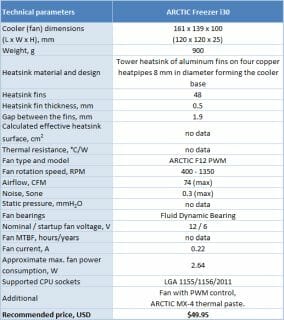
Packaging and Accessories
A not very big white box weighing 1.4 kg is made of thick cardboard. There is a photo of the cooler on the front of the box with the list of supported platforms:
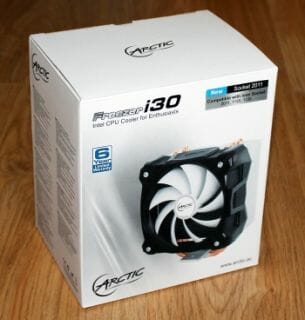
Inside this box there is a clear plastic casing with the cooler secured in it, beneath the casing you will find an additional bag with retention parts, backplate, manual and ARCTIC MX-4 thermal paste:
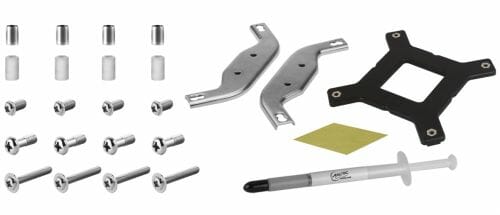
I would like to stress that they no longer apply a layer of thermal paste to the cooler base, which has often been the case with ARCTIC coolers, but provide a 4 g syringe instead/. This is a much more practical solution and this amount should be enough for 4-5 installations.
The cooler is made in China. It is priced at $49.95 and comes with six-year warranty.
Design and Functionality
The cooler looks like a common tower cooler measuring 161x139x100 mm and weighing 900 g:
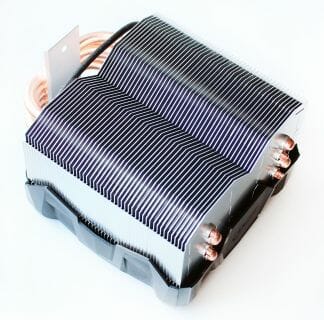
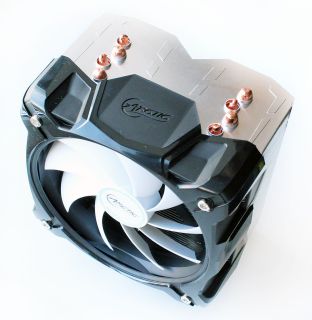
In fact, it consists of two parts: a heatsink and a fan in a plastic frame on the front side of the heatsink:
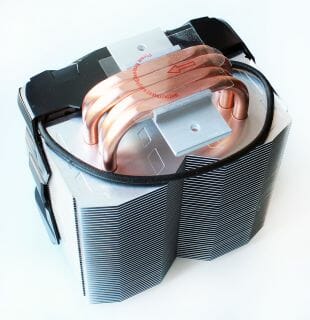
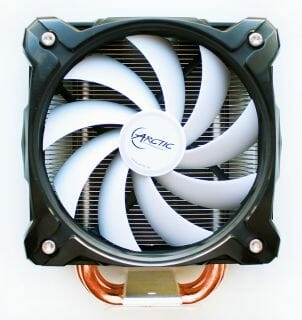
I have to admit that ARCTIC Freezer i30 looks pretty common. Its heatsink consists of 48 aluminum fins 0.5 mm thick pressed against the copper heatpipes with 2 mm gaps between them:
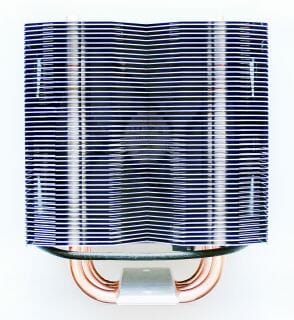
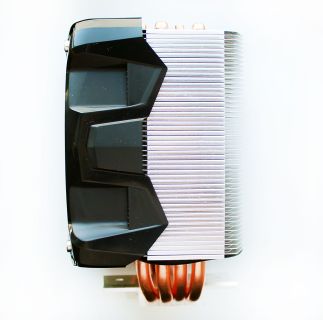
The fins on the sides of the heatsink are bent towards the bottom of it and this ay seal the sides completely directing the entire airflow from the fan towards the heatpipes and the heatsink body:
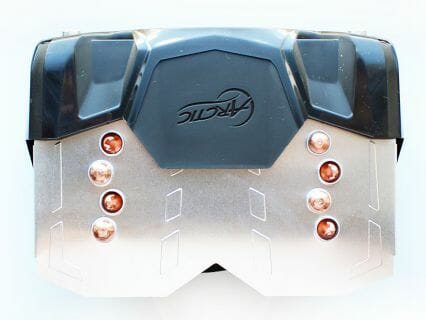
There are no optimizations of any kind at the air intake side of the heatsink: the fins have no profile or shape modifications, which could lower the airflow resistance. We dare suppose that a heatsink like that will lose a lot of efficiency once the fan rotation speed slows down, especially since the latter is of standard 25 mm width and is not one of those high-speed and powerful models.
There is a triangle cut-out in the find on the air exhaust side of the heatsink, which seems to be intended mostly to reduce the heatsink weight rather than optimize the airflow r improve the cooling efficiency:
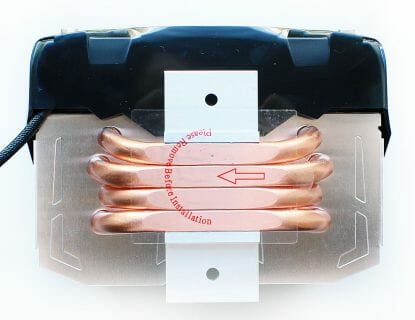
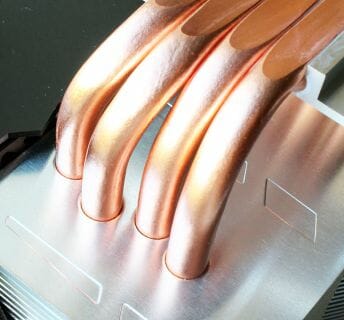
There are four heatpipes in ARCTIC Freezer i30. They are 8 mm in diameter and are slightly shifted away from one another inside the heatsink body:
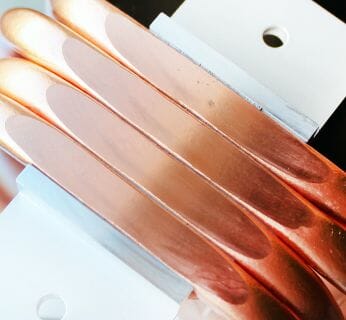
The heatpipes are densely packed in the base creating an almost uninterrupted base surface:
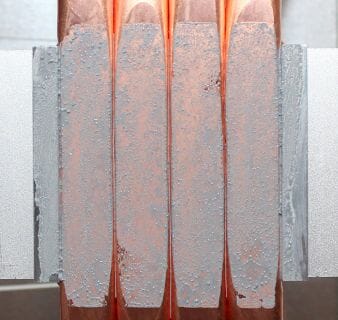
Nevertheless, the thermal imprint test with an LGA 2011 processor shows that there still are one-millimeter gaps between the heatpipes and the aluminum plate son the sides:
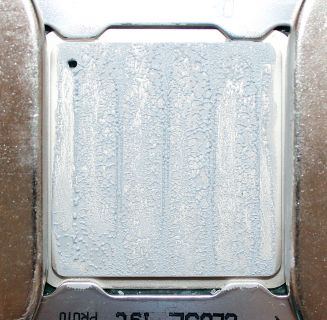
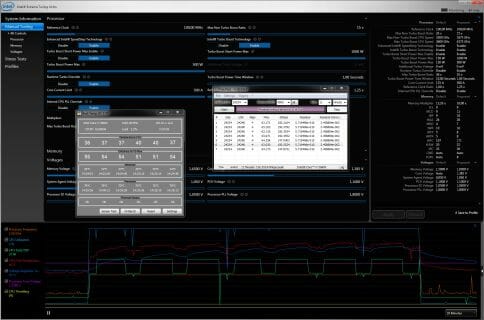
The base surface is very even, it provides good contact almost over the entire processor heat-spreader surface.
ARCTIC Freezer i30 comes with a single 120 mm ARCTIC F12 PWM fan installed in a plastic frame:
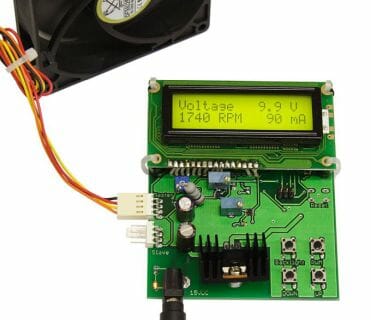
We have already reviewed this fan model two years ago and back then it made a very mixed impression compared with the competition. Its rotation speed can be adjusted automatically using PWM method in the interval from 400 to 1350 RPM. The airflow should reach 74 CFM at the maximum fan rotation speed and the level of generated noise shouldn’t exceed 0.3 Sone.
The fan is built with a fluid dynamic bearing inside. Although its MTBF is not mentioned in the official technical specifications, we assume that it should last at least during the cooler 6-year warranty period without any problems. The maximum power consumption of the ARCTIC F12 PWM fan at 0.22 A current shouldn’t exceed 2.7 W.
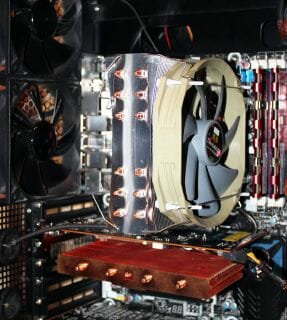
To reduce the vibrations and improve the cooler’s acoustic performance there are 2 mm silicone washers glued to the corners of the fan, where it touches the heatsink:
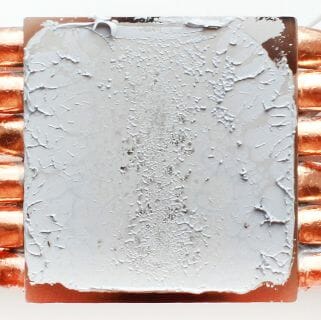
The fan is fastened to the frame with four screws.
Compatibility and Installation
ARCTIC Freezer i30 is only compatible with the current Intel platforms, such as LGA 1155, LGA 1156 and LGA 2011. As for AMD platforms, ARCTIC is currently offering a Freezer A30 cooler supporting FM2, FM1, AM3+, AM3, AM2+ and AM2 platforms. In our opinion, it is a pretty strange decision to introduce two different cooler models for different processors. Especially, since it is a pretty expensive product, after all.
The installation procedure is described in detail in the following manual, and we will check it our using an LGA 2011 mainboard as an example. The first thing to do insert the metal bushes for the rails into the retention holes:
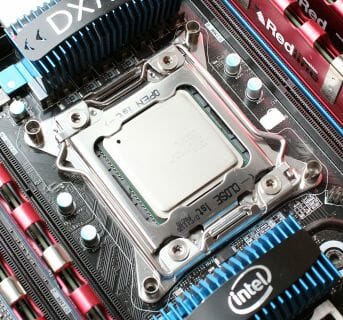
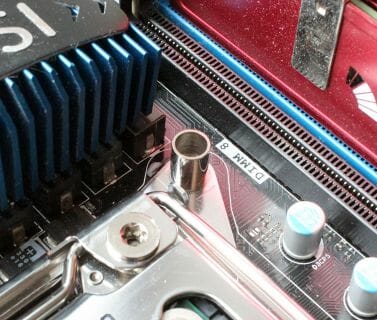
Then we fasten the retention rails with the screws:
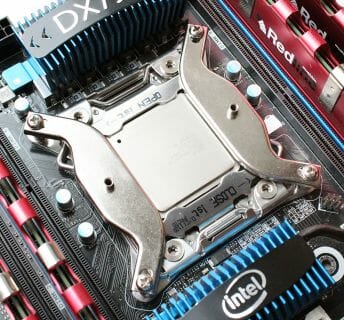
The heatsink is firmly pressed against the processor heat-spreader and fastened to the rails with two screws:
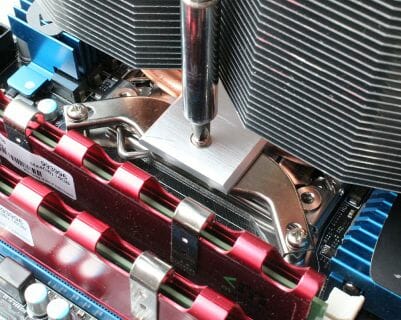
Only after that we attach the fan frame with the impeller. The clearance between the lower heatsink fin and the mainboard PCB is 45 mm, but the lowest side of the fan frame is hanging another 5-7 mm lower that is why it could theoretically interfere with memory modules featuring tall heat-spreaders:
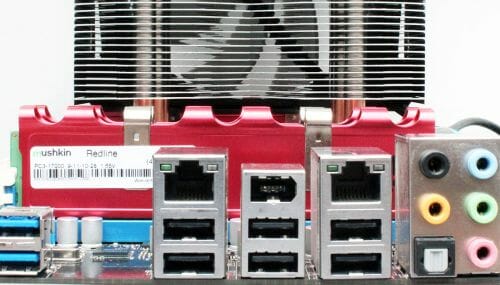
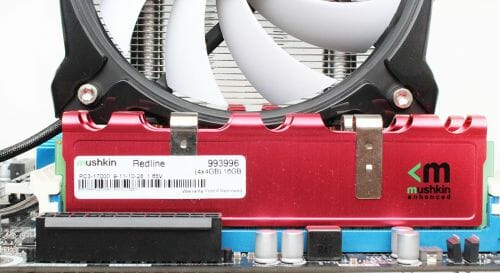
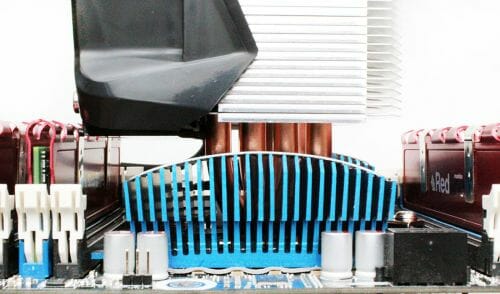
Overall, ARCTIC Freezer i30 looks very massive and even promising inside the system case:
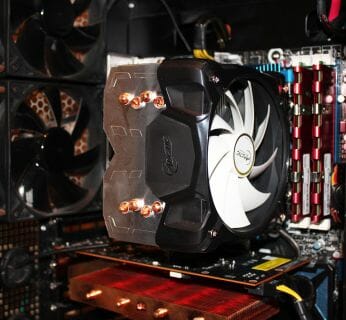
Let’s see if its performance proves up to our expectations.
Testbed Configuration and Testing Methodology
We tested all coolers inside a closed system case with the following configuration:
- Mainboard: Intel Siler DX79SI (Intel X79 Express, LGA 2011, BIOS 0537 from 07/23/2012);
- CPU: Intel Core i7-3960X Extreme Edition, 3.3 GHz, 1.2 V, 6 x 256 KB L2, 15 MB L3 (Sandy Bridge-E, C1, 32 nm);
- Thermal interface: ARCTIC MX-4;
- Graphics card: Asus Radeon HD 6770 DirectCU Silent (EAH6770 DCSL/2DI/1GD5) GDDR5 128 bit, 850/4000 MHz (with a passive heatsink from the DeepCool V4000 VGA cooler);
- System memory: DDR3 4 x 4GB Mushkin Redline (Spec: 2133 MHz / 9-11-10-28 / 1.65 V);
- System drive: Crucial m4 256 GB SSD (SATA-III,CT256M4SSD2, BIOS v0009);
- Drive for programs and games: Western Digital VelociRaptor (300GB, SATA-II, 10000 RPM, 16MB cache, NCQ) inside Scythe Quiet Drive 3.5” HDD silencer and cooler;
- Backup drive: Samsung Ecogreen F4 HD204UI (SATA-II, 2 TB, 5400 RPM, 32 MB, NCQ);
- System case: Antec Twelve Hundred (front panel: three Noiseblocker NB-Multiframe S-Series MF12-S2 fans at 1020 RPM; back panel: two Noiseblocker NB-BlackSilent PRO PL-1 fans at 1020 RPM; top panel: standard 200 mm fan at 400 RPM);
- Control and monitoring panel: Zalman ZM-MFC3;
- Power supply: Seasonic SS-1000XP Active PFC F3 1000 W (with a default 120 mm fan).
For the primary tests and summary diagrams we overclocked our six-core processor with the clock generator frequency set at 125 MHz, the multiplier at 35x and “Load-Line Calibration” enabled to 4.375 GHz. The nominal processor Vcore was increased to 1.385 V in the mainboard BIOS. After that we tested the new coolers at even higher frequency and voltage settings. Turbo Boost was disabled during this test session, and Hyper-Threading technology was enabled to increase the heat dissipation. The memory voltage was at 1.65 V and its frequency was 2000 MHz with 9-11-10-28 timings. All other parameters available in the mainboard BIOS and related to CPU or memory overclocking remained unchanged.
All tests were performed under Windows 7 Ultimate x64 SP1 operating system. We used the following software during our test session:
- LinX AVX Edition version 0.6.4 – to load the processor (memory – 4500 MB, Problem Size – 24234, two 11-minute cycles);
- Real Temp GT version 3.70 – to monitor the processor core temperatures;
- Intel Extreme Tuning Utility version 3.1.201.5 – for monitoring and visual control of all system parameters during overclocking.
So, the complete screenshot during the test session looks as follows:
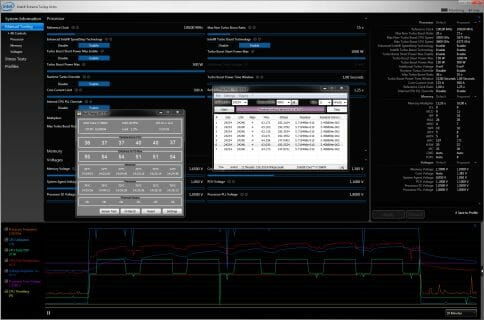
The CPU was loaded with two consecutive LinX AVX test runs with the settings as indicated above. The stabilization period for the CPU temperature between the two test cycles was about 8-10 minutes. We took the maximum temperature of the hottest CPU core for the results charts. Moreover, we will also provide a table with the temperature readings for all cores including their average values. The ambient temperature was checked next to the system case with an electronic thermometer with 0.1 °C precision that allows hourly monitoring of the temperature changes over the past 6 hours. The room temperature during our test session varied between 24.1-24.6°C.
The noise level of each cooler was measured between 1:00 and 3:00 AM in a closed room about 20 m2 big using CENTER-321 electronic noise meter. The noise level for each cooler was tested outside the system case when the only noise sources in the lab were the cooler and its fan. The noise meter was installed on a tripod and was always at a 150 mm distance from the cooler fan rotor. The tested cooling systems were placed at the edge of the desk on a sheet of polyurethane foam. The lowest noise reading our noise meter device can register is 29.8 dBA and the subjectively comfortable noise level in these testing conditions was around 36 dBA (do not mix it up with low noise level). The fan(s) rotation speed was adjusted in the entire supported range using our in-house controller by changing the voltage with 0.5 V increment.
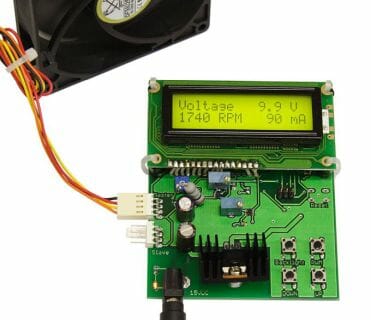
We are going to compare the new ARCTIC Freezer i30 cooler against our usual leader of the sub-$45 price segment – Thermalright TRUE Spirit 140 equipped with one default TY-140 fan:
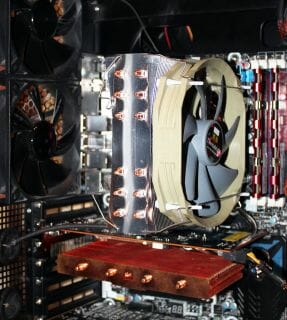
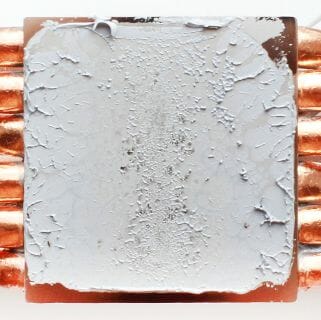
Since ARCTIC Freezer i30 doesn’t allow installing an alternative or an additional fan, both cooler will only be tested in their default configurations. I would also like to add that the rotation speed of all fans was controlled using the same special controller I mentioned above with ±10 RPM precision.
Performance
Cooling Efficiency
The results of our cooling efficiency tests are given on the following diagram and in the following table:

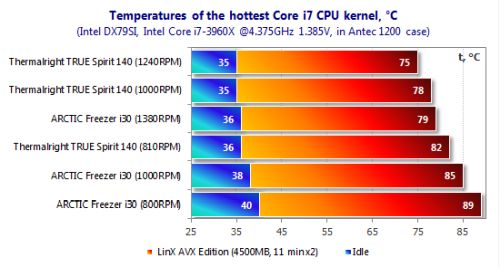
As we see, ARCTIC Freezer i30 didn’t demonstrate anything innovative in terms of cooling efficiency. At maximum fan rotation speed on both coolers, ARCTIC Freezer i30 loses 4°C to Thermalright TRUE Spirit 140 under peak load. At average (1000 RPM) fan speed, it falls 7°C behind the competitor, and at 800 RPM the performance difference between the two coolers remains the same and, of course, in Thermalright’s favor. It is obvious that despite the impressive size, improved heatpipes direct contact and very high pressure hold at the base, ARCTIC Freezer i30 still didn’t manage to catch up with the performance leader in this price segment. In addition, unlike TRUE Spirit 140, the ARCTIC cooler is also not a universal product.
You can compare the results of our today’s testing participants against the previously tested products in the following table and diagram*. Each cooler was tested in its default configuration in the quiet mode and at the maximum speed of the fan(s) with the CPU overclocked to 4.375 MHz at 1.385 V Vcore.
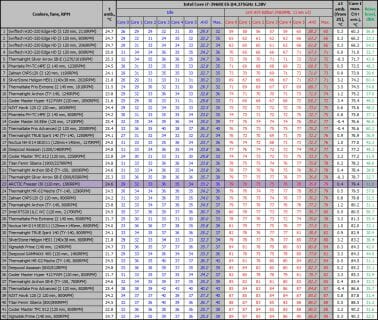
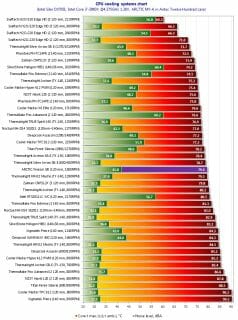
ARCTIC Freezer i30 is precisely in the middle of our summary chart, right between Thermalright HR-02 Macho and Thermalright Silver Arrow SB-E at the minimal fan speed. At the same time, the Freezer i30 turned out to be the noisiest cooler in this group. But overall, it is a good result.
As for the maximum CPU overclocking results, no matter how hard we tried, ARCTIC Freezer i30 didn’t manage to keep the CPU stable at any frequency over 4.375 MHz and Vcore setting over 1.385 V:
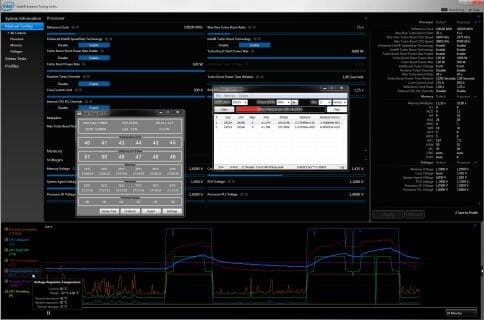
Therefore, in our overall rating chart for maximum processor overclocking it placed in the very first group between the liquid-cooling system from Intel and Cooler Master TCP 812 cooler, showing better acoustic performance than both of them:
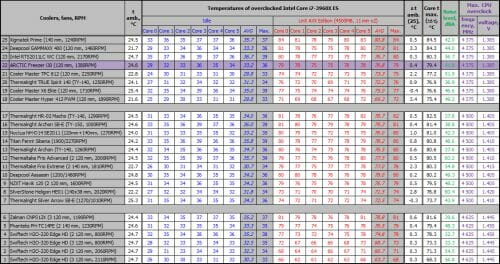
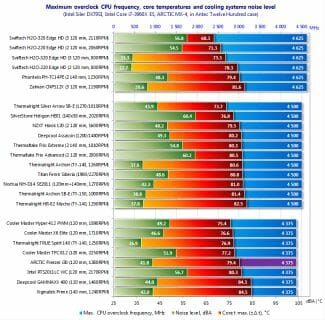
Acoustic Performance
We measured the noise level of our coolers throughout the entire speed range of their fans, as described in the chapter on testing methodology. Here are the results:
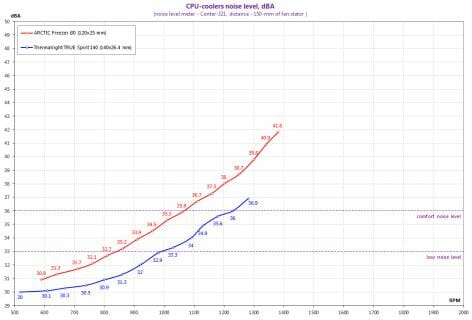
I can’t say that ARCTIC Freezer i30 has a noisy fan, because it remains acoustically comfortable up to 1070 RPM and can be considered really quiet up to 840 RPM. It doesn’t make any funny noises like clicking crackling or buzzing. Its impeller is well-balanced and works smoothly. Nevertheless, it once again got defeated by Thermalright TRUE Spirit 140 and TY-140 fan. So far no other cooler and fan could get close to the acoustic performance of this Thermalright product.
Conclusion
Frankly speaking, ARCTIC Freezer i30 didn’t impress us with any unique innovations, which the company slogan promised, and didn’t demonstrate award-winning cooling efficiency or acoustic performance. Both these characteristics are, in fact, pretty average and therefore, it will hardly be able to compete against the leaders in this price segment. Moreover, the company’s strange strategy of offering individual Intel and AMD models will force the potential ARCTIC Freezer i30 owners to replace the cooler together with the platform, if they eventually decide to switch camps. And that is while there are a lot of good and much more universal options in the today’s market for the same $49.95. That said, it is really hard to recommend ARCTIC Freezer i30 at this time, but the choice is ultimately yours.
P.S.: Although the MSRP of the new ARCTIC Freezer i30 is relatively high, it is already retailing for $39, which is 410 less than its original recommended price. Although, it doesn’t change things much for this cooler.